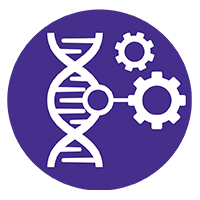Back
Advances in Therapeutic Development Across Modalities
Prologue: Overview of Biomarker and Bioanalytical Readouts for Safety and Efficacy Evaluation of AAV Gene Therapy
Monday, April 24, 2023
9:00 AM – 9:30 AM ET
Location: Salon D, 5th Floor

Yanmei Lu, PhD (she/her/hers)
VP Biomarker and BioAnalysis
Sangamo Therapeutics
Brisbane, California, United States
Prologue Speaker(s)
In vivo gene therapy has proven to be a viable therapeutic approach and holds enormous potential to treat rare diseases with monogenic mutations as well as complex acquired disorders. Recombinant adeno-associated virus (rAAV) has emerged as the most frequently used vehicle for genomic medicine. The technology platforms for clinical applications can be divided into four different approaches: gene replacement, gene addition, gene editing and gene regulation.
Biomarker is a measurable biological parameter which is used as an indicator of a normal biological process, a pathogenic process, or a pharmacologic response to a therapeutic intervention. Based on the context of use, biomarkers can be categorized into seven types: Susceptibility/Risk, Diagnostic, Monitoring, Prognostic, Predictive, Pharmacodynamic and Safety biomarkers. In drug development, biomarkers are used for different purposes at different stages. At preclinical stage, biomarkers can help identifying drug target, understating drug’s MoA, establishing PK/PD relationship, evaluating safety in animal studies, and selecting clinical dose. During clinical development, biomarkers can identify patients for clinical trial patient enrollment, demonstrate a treatment is having the desired effect on the body, or monitor the safety of a therapy. For clinical development, the conventional approach is to use clinical outcomes to evaluate the performance of a drug. Clinical outcomes measures how patients feel, function and survive. These mortality or disease progression endpoints may take many years. The biomarker-driven approach is to use biomarkers to predict drug efficacy. These biomarkers are called surrogate endpoint. They have been used in clinical trials to substitute for clinical endpoints to predict clinical benefits. This approach may shorten the path of drug development and get the drug to patient faster. This presentation will provide an overview of biomarkers and bioanalytical endpoints for patient selection, biodistribution and shedding, pharmacodynamic as well as safety evaluation of genomic medicine.
Biomarker is a measurable biological parameter which is used as an indicator of a normal biological process, a pathogenic process, or a pharmacologic response to a therapeutic intervention. Based on the context of use, biomarkers can be categorized into seven types: Susceptibility/Risk, Diagnostic, Monitoring, Prognostic, Predictive, Pharmacodynamic and Safety biomarkers. In drug development, biomarkers are used for different purposes at different stages. At preclinical stage, biomarkers can help identifying drug target, understating drug’s MoA, establishing PK/PD relationship, evaluating safety in animal studies, and selecting clinical dose. During clinical development, biomarkers can identify patients for clinical trial patient enrollment, demonstrate a treatment is having the desired effect on the body, or monitor the safety of a therapy. For clinical development, the conventional approach is to use clinical outcomes to evaluate the performance of a drug. Clinical outcomes measures how patients feel, function and survive. These mortality or disease progression endpoints may take many years. The biomarker-driven approach is to use biomarkers to predict drug efficacy. These biomarkers are called surrogate endpoint. They have been used in clinical trials to substitute for clinical endpoints to predict clinical benefits. This approach may shorten the path of drug development and get the drug to patient faster. This presentation will provide an overview of biomarkers and bioanalytical endpoints for patient selection, biodistribution and shedding, pharmacodynamic as well as safety evaluation of genomic medicine.
Learning Objectives:
- Upon completion, participants will be able to define at least 7 different types of biomarkers and provide examples of their use in the design of clinical trials for gene therapy.
- Upon completion, participants will be able to elucidate considerations involved in use of surrogate biomarkers.
- Upon completion, participants will be able to describe at least one example of the use of a safety biomarker in the design of a gene therapy trial.

